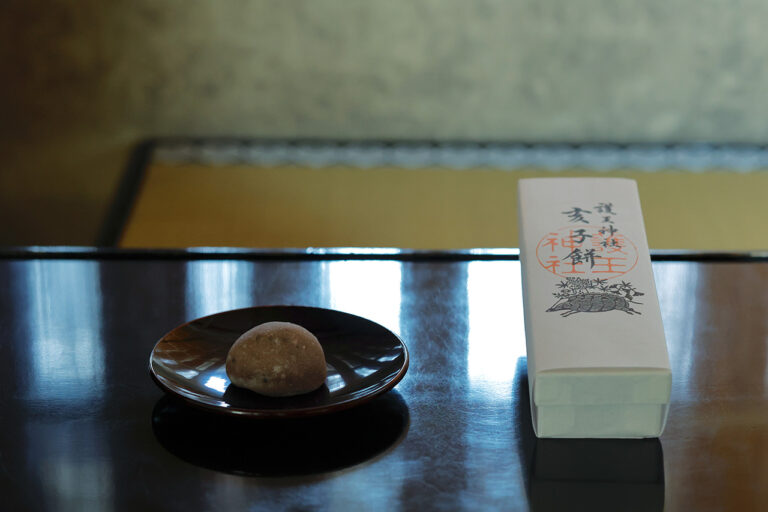
Made in Kyoto "Wagashi Saijiki" - Boar's Day...
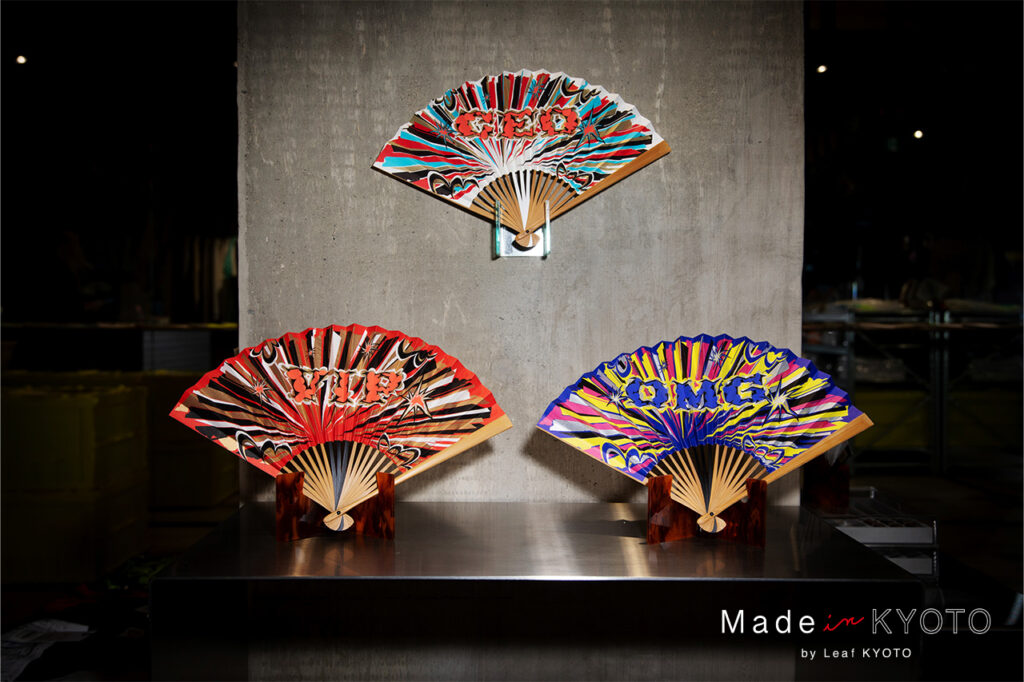

In Kyoto, the capital of a thousand years, craftsmanship has been passed down through the ages, and traditional crafts, a fusion of beautiful handiwork and unique sensibilities, are not just "things" but works of art that fit into our daily lives. Made in KYOTO: Artisans and Creators of Kyoto" spotlights these unique Kyoto crafts and introduces their charms and new challenges.
One of them is the "Kyoto fan," which was born in Kyoto in the Heian period (794-1185) and has a history of more than 1,000 years. In 2021, the long-established fan store Miyawaki Urusenan (Nakagyo-ku, Kyoto), which has preserved the tradition and dignity of Kyoto fans since their establishment in the Edo period, launched Banana and Yellow in pursuit of the unknown possibilities of fans. They are proposing a new way of making fans as art pieces and fashion items that transcend the conventional framework of folding fans. We look at the challenge of a long-established company that evolves with the times without fear of change, and the culture of a new age born from the intersection of tradition and pop.
Miyawaki Urasen-an, a townhouse on Rokkaku-dori in the city of Kyoto, was founded in 1823 by the first generation, a native of Mino Province. It was during the third generation that the Japanese painter Tessai Tomioka, who invented the decorative fan as a craft, named the shop after the famous Kyoto tree called Urasenzakura. From the beginning, the company has manufactured and sold almost all of its products in-house, and its techniques have been passed down to the present day.
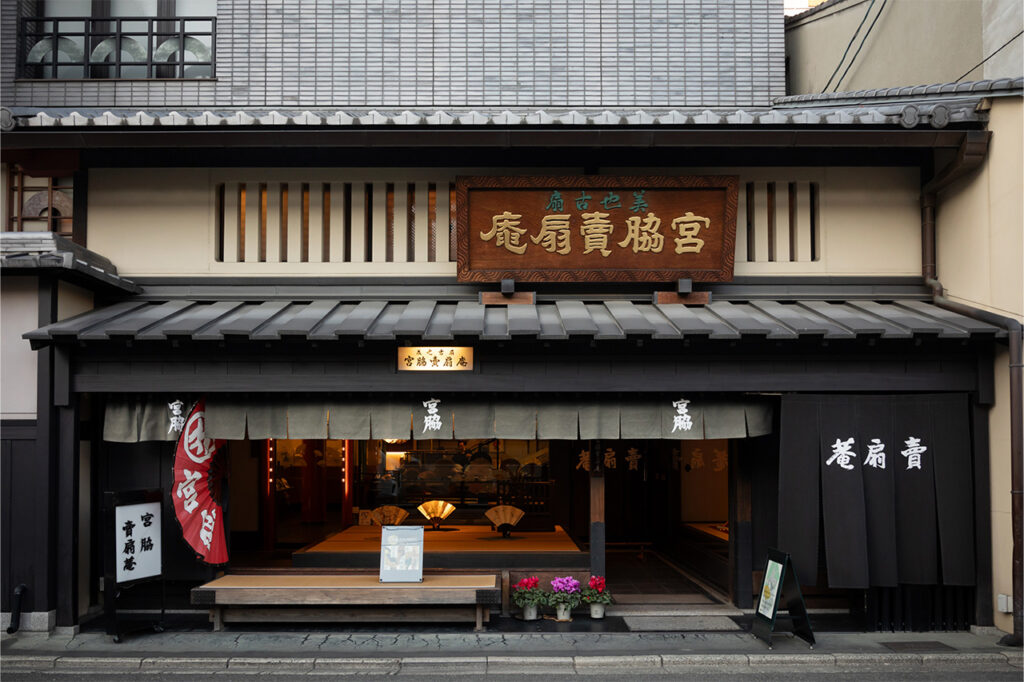

The production of folding fans can be roughly divided into three categories: fan bone making, fan surface making, and finishing work that combines the two, and in total there are more than 20 processes involved. The fan making process is divided into three main categories: fan bone making, fan face making, and finishing work that combines the two, and in total there are more than 20 processes. There are painters, folders, and craftsmen who specialize in striking the main part that holds the fan's bones together, and each process is carefully completed by the hands of skilled craftsmen," says store manager Satoshi Kobayashi. It is precisely because of the high level of skill refined through the division of labor that Kyo Sensu has been handed down as a craft that Kyoto is proud of.
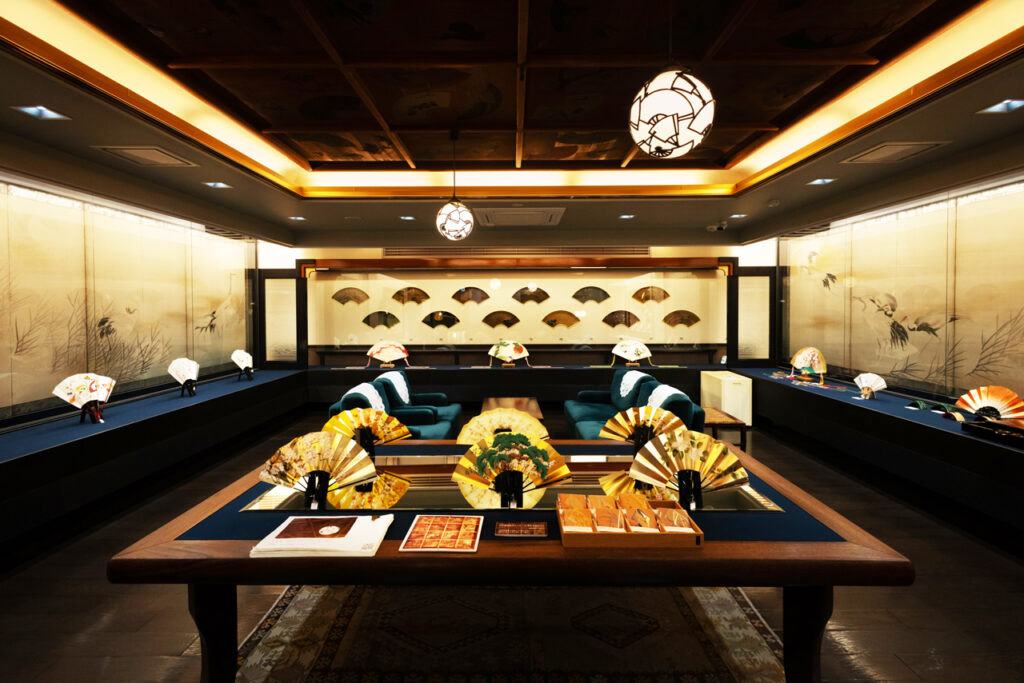


A painter applies the overglaze painting on the base paper. Sensu (folding fans), which are also called "portable works of art," are usually decorated with seasonal elements such as plants and insects, or with lucky charms such as "Takarazukushi" (a type of treasure chestnuts).

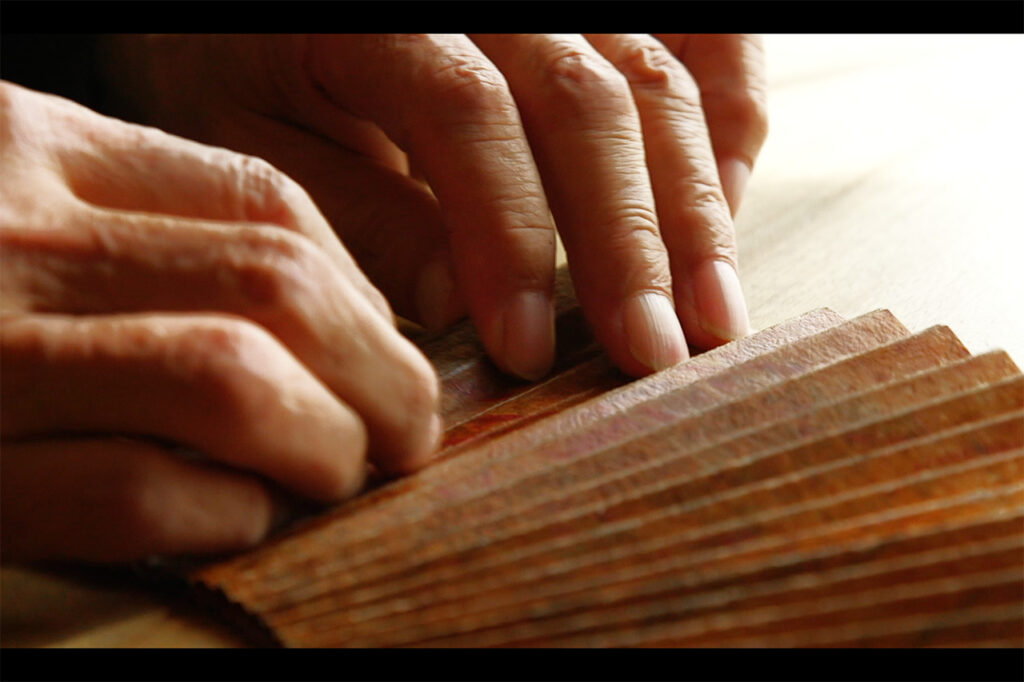
Folding is a folding process in which moistened Mino Washi base paper is placed between sheets of patterned paper and quickly folded to form a bellows shape. Since the optimum degree of dampness varies depending on the number of sheets of base paper pasted together and the humidity of the day, it is also a skill that skilled craftsmen are able to discern.

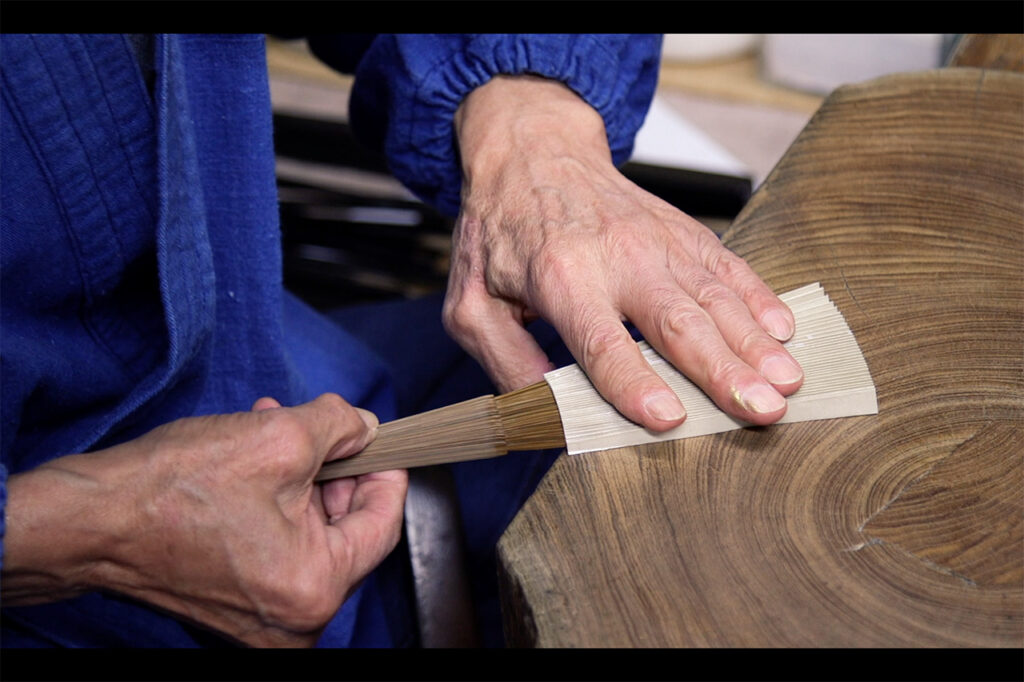
The finishing process involves gluing the bamboo skeleton into a hole made by blowing on it and gluing it in place. The process requires the delicate insertion of nearly 50 bamboo ribs into the correct position.

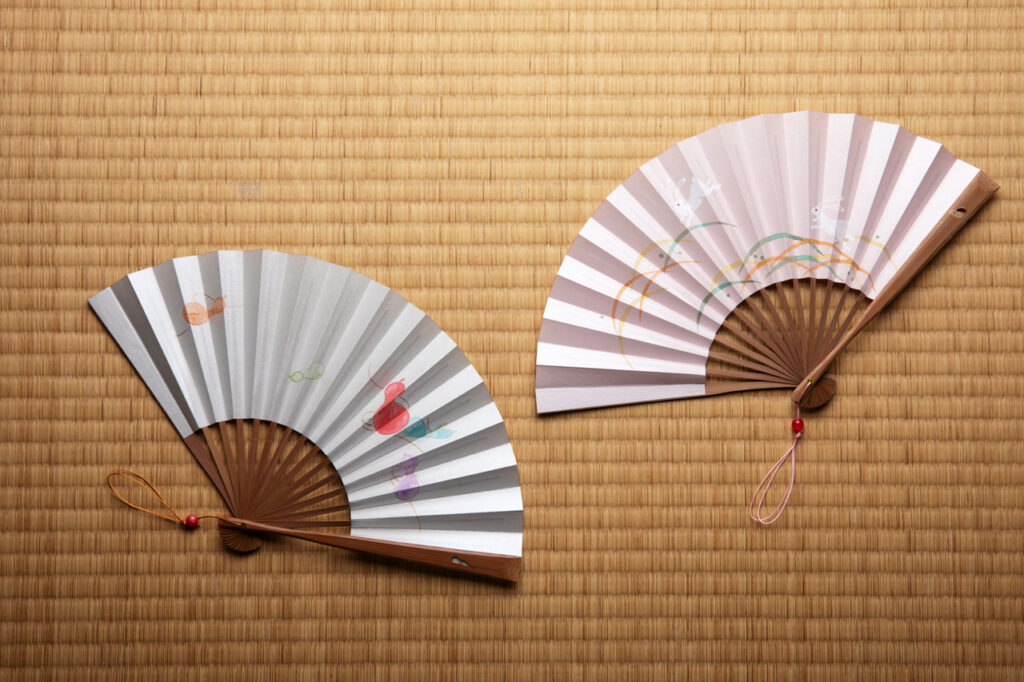
Kyo-shu-fan, gourd, 8,800 yen (left) and Kyo-rin-fan, rabbit, 16,500 yen (right)

[In 2021, just before the 200th anniversary of the founding of Miyawaki Urasen-an, a new brand "Banana and Iero" was born next to the main store. The atmosphere is 180 degrees different from that of Miyawaki Urasen-an, which has the relaxed atmosphere of a machiya townhouse, and many people may be surprised by the pop appearance full of vivid colors. The man who launched this much-talked-about brand is Tadamasa Minami, the eighth generation owner of Miyawaki Urasenan. Banana and Ierowu" is a new brand that came about as a result of the development of designs for fans, which originated in Kyoto, and which we wanted to make more widely known to people in Japan and abroad. [We hope that people will enjoy a different view of the world from that of Miyawaki Urasen-an.
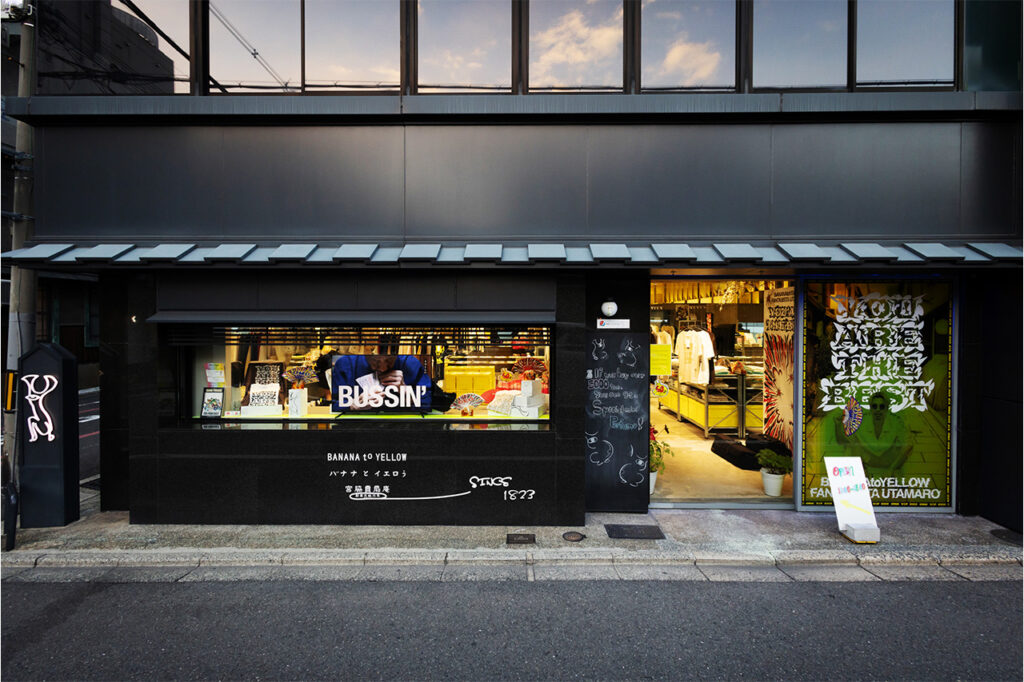

[Many of the fans sold at Banana and Yellow are bright and colorful, or have alphabets painted on them, a far cry from the conventional image of fans. The original products are not limited to fans, but also include fashion items such as T-shirts and bags, key chains, stickers, and other miscellaneous goods. The concept of "Banana and Yellow" is to offer fans that can be used in everyday life with a sense of fashion. We hope that people will wear traditional fans as if they were fashionable, just like watches or accessories.
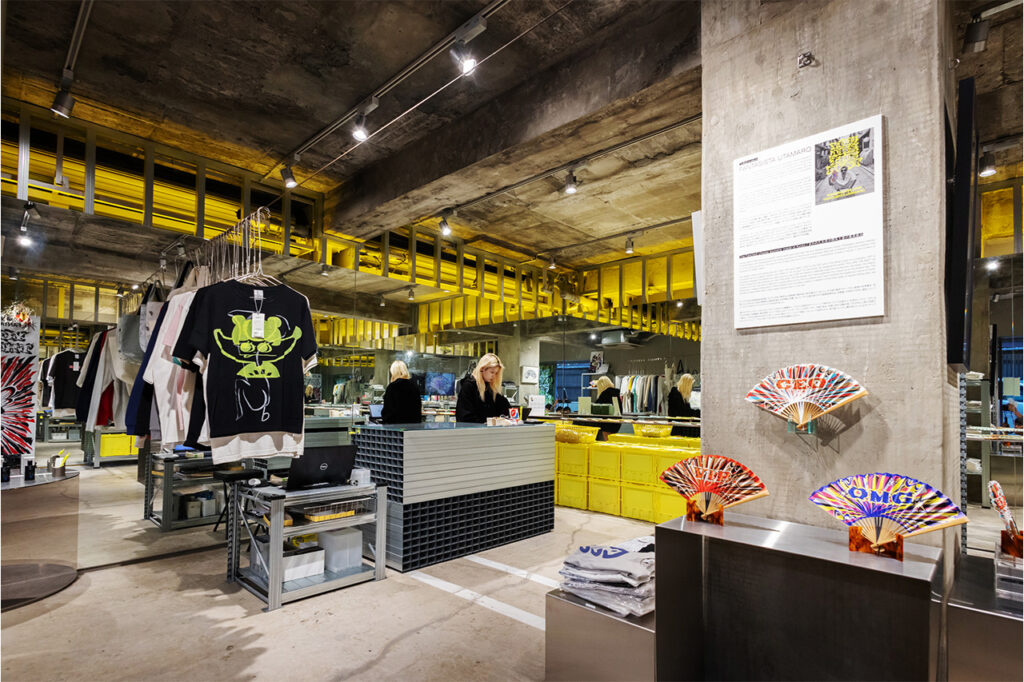

One of the main features of Banana and Yellow is to collaborate with various artists and specialists beyond the boundaries of art, music, fashion, and other genres. [Starting with a fan produced in collaboration with Kazunari Kitagawa of GRAPH, numerous collaborative products have been created with artists such as Fantasista Utamaro, Akira Minagawa of Mina Perhonen, and Kunihiko Morinaga of ANREALAGE. I sometimes ask artists who create works that I find cool to collaborate with me. I am conscious of the fact that I want to put elements of coolness into fans with beautiful or cute designs," says Minami. Products that express a unique world are attracting attention from a wide range of generations, especially from fans of artists and brands.
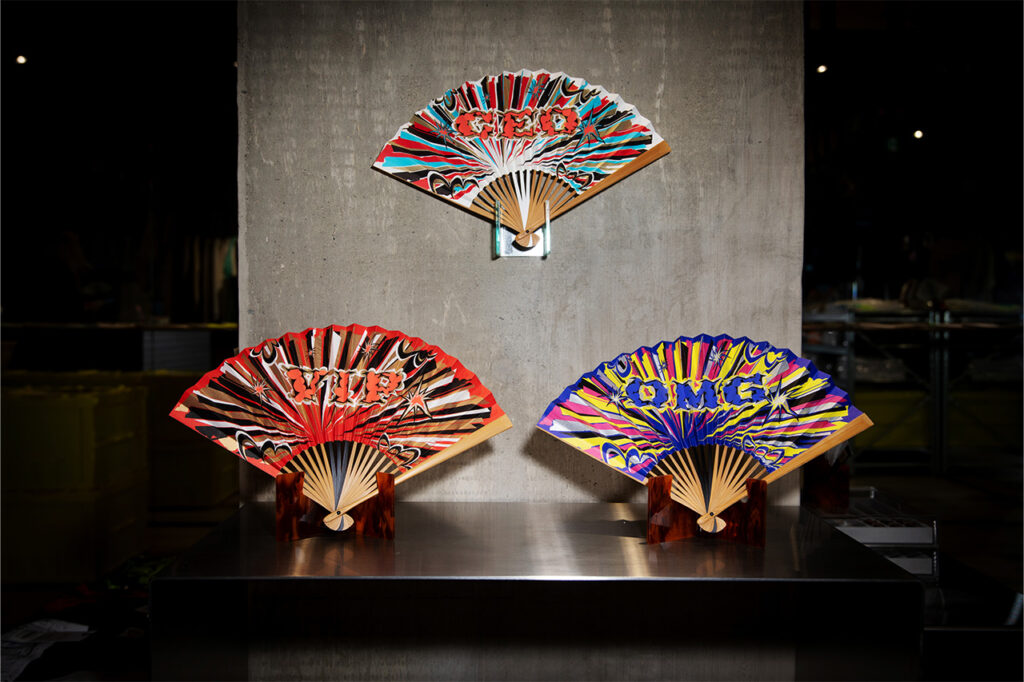
Collaboration fan with New York-based artist Fantasista Utamaro

Some of the products are arrangements of the old fan mask designs of Miyawaki Uruguan. The colors and designs pop, but the brush strokes used to draw them, the folding process, and the finishing process of attaching the fan bone to the fan surface all make use of traditional fan-making techniques," says Minami.
The modern design of these fans may at first glance seem different, but they are the result of the long history and techniques of Miyawaki Urasen-an.
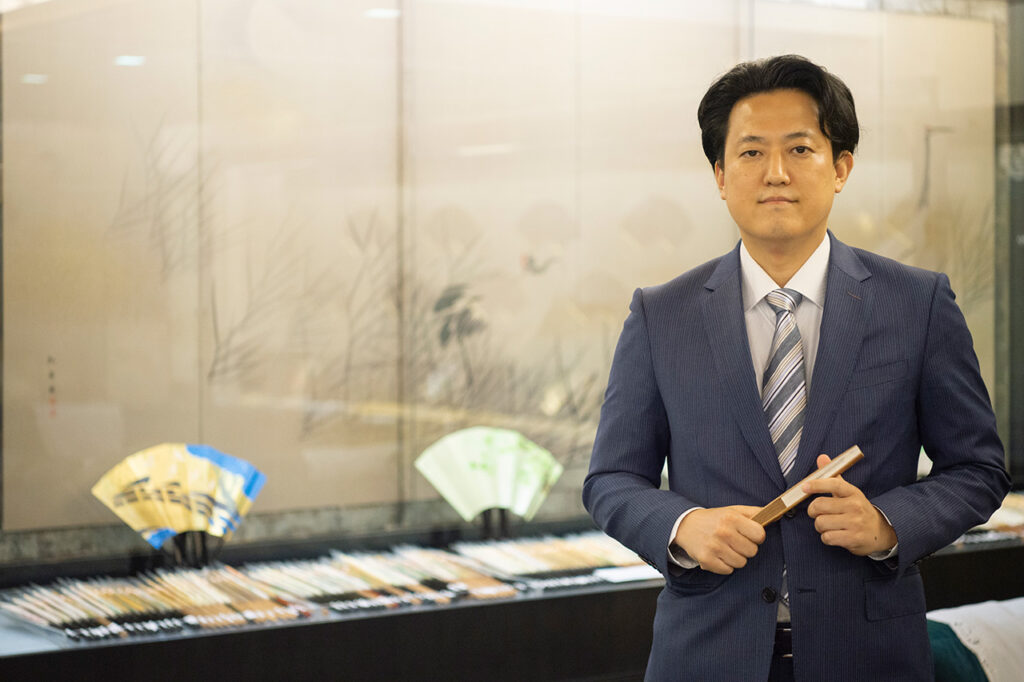
The eighth head of the family, Tadamasa Minami.
Born in Osaka in 1976 as the grandson of Shinpei Miyawaki V. He joined his mother's family in 2001 and became the president of Miyawaki Urugian in 2020. As president of the Kyoto Sensu Urasen Cooperative Association, he trains craftsmen of Kyoto-style folding fans and passes on their techniques, and in 2021, he will launch the fashion brand Banana and Ieroux to create fans for the younger generation that incorporate new sensibilities, thereby expanding the range of fans.

The fan is mainly used today as a tool to keep cool, but if you trace its roots, you will find that it was a necessity for formal wear by the Heian aristocrats, an article of clothing that expressed dignity, and something that people wanted to carry with them even when they were not in high spirits. [At Banana & Yelloh, we will continue to look at the origins of the fan, and hope to introduce a new way of using the fan that is suited to modern lifestyles. We would be happy if we can preserve the culture of the fan in various forms for the future.
Over 600 interviews per year! An order site carefully selected by the editors who knows Kyoto and Shiga.
nowOfficial LINE friend registration500 yen OFF coupon is being issued!
Distributed every Friday morning at 8:00 am! From new restaurant information to event information that we want to share with you, We deliver articles about Kyoto that are useful to know. About 20,000 people have registered.Click here to add a friend!
 News
News Feature article
Feature article Featured event
Featured event